#this is my platonic ideal of a lightning dragon. what the fuck.
Explore tagged Tumblr posts
Text
Me: i will allow myself one (1) christmas hatch. And I know it'll be terrible
Said hatch:
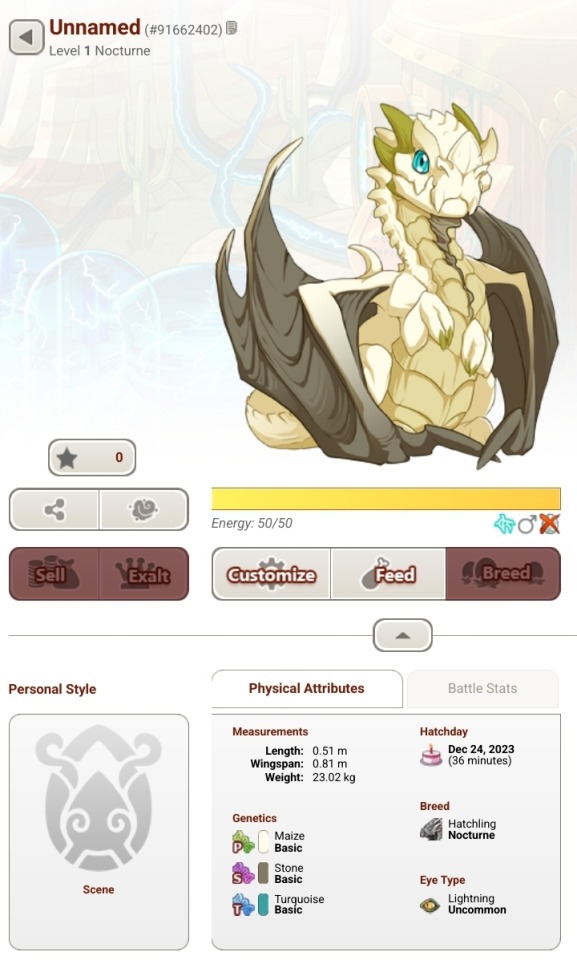

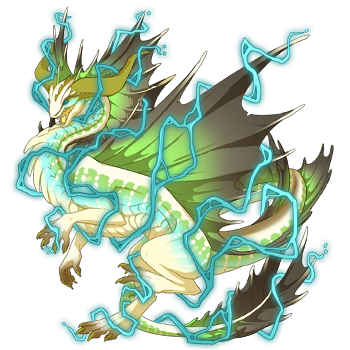
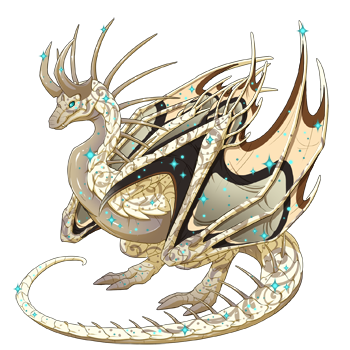

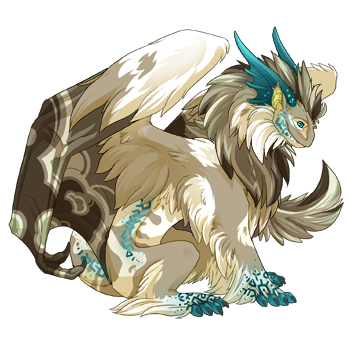



Me: ... okay, rude,
#flight rising#fr#dragon share#babs' babs#gen 1 dragons#this is my platonic ideal of a lightning dragon. what the fuck.#matching neutral prime and sec with a teal-ranged tert#wowie#look at that fucking auraboa dude! i am deranged.
6 notes
·
View notes
Text
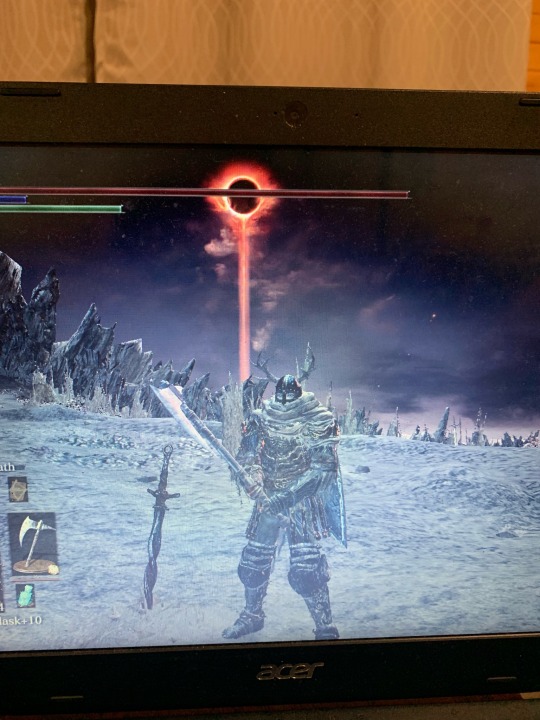




finally beat all the ds3 bosses solo the other day so here’s a buncha shitty cell phone pics i sent to my friend to brag
build was a regen faith build 44/40 VIG/END, 28/16 STR/DEX, 60 FAITH. rings were Sun Princess, FAP, Havel, and Chloranthy (all +3 for Midir/Gael). i used Blessed Lothric Knight Greatsword for Soul of Cinder, with Ancient Dragon Greatshield offhand, Sunlight Straight Sword + ADGS vs Nameless King, and the Blessed Dragonslayer Axe/Ethereal Oak Shield you see in the pics vs everyone else.
here’s my review of the 5 hardest bosses:
1. Soul of Cinder: 9/10
fun fight, the super varied movesets were really thematic. loses a point cos if you aren’t familiar with previous games’ lore this is kind of an “okay i guess there had to be a final boss” type of fight. like great gameplay but Cindy has 0 story build-up in ds3
2. Nameless King: -100/10 first phase, 7/10 second phase
overhyped garbage fight. hate playing camera souls phase 1, hate that you’re encouraged to bring lightning for the drake’s weakness and then punished for it phase 2, and i hate his janky stab-grab hitbox.
“he’s got a super varied moveset” okay but he doesn’t if you do the typical “suck dick and smack booty” ds3 boss strategy; the fight is just swing swing punish for 2 minutes straight. don’t get me wrong i love ds3 gameplay and i’m here for that but the way ppl talk about NK i was expecting something better than a trashfire phase 1 followed by a phase 2 that is IMO subpar when compared to Dragonslayer Armor or Cindy for “big dude with sword” fights.
i won’t be fighting NK on any NG+s i think. phase 1 is that unfun, so it’s probably a 1/character fight to get his sick fashion and maybe that swordspear
3. Sister Friede: 9/10
first phase is fun as hell once you get the hang of it, phase 2 is a bit meh and really why she isn’t 10/10, phase 3 is terrifying and so satisfying to beat. not much to say here. Friede and Cindy are both very nearly that platonic dark souls ideal of a boss that feels impossibly hard until you learn their moves and realize how fair (yet challenging) the fight is.
4. Midir: 10/10 potential, 7/10 practical
i love midir’s moveset and he’s the dragon fight of my dreams. you know how a lot of video games do dragon fights but they don’t do a good job of actually showcasing what it’s like to fight a five-storey tall crocodile that can breathe fire and fly? midir falls (omg spoiler) a lil short on the flying department but nails everything else.
the thing is, he’s a health sponge. this’d be my favourite fight in the game if he had about 2000 less HP but as is, he’s a bit too much of an endurance fight. which takes away from the sheer terror of a well done dragon - there should be more of an element of “take him down fast or die”. endurance fight removes that tension and makes it more of a “somersaulting arsehole teases animal for ten minutes before delivering a brutal headshot” kind of tone. midir also gives a surprising amount of space for you to heal for a battle that’s considered the hardest in the game, which removes the tension of an endurance fight - you’re not outlasting a series of deadly combos, you’re using your own massive HP pool to marathon 200 hits into midir’s noggin
5. Gael: 6/10
i’m probably never going to fight gael again but he does score a lot of points for
a) having each phase be more of an awe-inspiring “oh shit oh fuck” moment than the last
b) making me nearly piss myself when i passed through the fog gate for the first time and was like “huh this a weird spot for the gate” and then see him just fucking sprinting at me
c) literally saying “it’s always darkest before the soul!” like what a fucking funny line for the final boss of the series
anyways he’s got the same issue as midir where it’s a sastisfyingly difficult fight made frustratingly much harder by an inflated HP pool. even once i got phase 1 & 2 relatively down, he was such a slog that my mistakes would just pile up for phase 3. i know i don’t have this complaint for Friede who has a similar size HP pool but she’s not an endurance slog - she can get combo’d down fast phase 1, and phase 2 is so full of free hits that she’s effectively 5000 HP less than her written total. you don’t spend the entire fight dodging around being like “okay… where’s my one hit opening…” which is fun to do sometimes! just not for the entirety of an extremely long fight
outside of HP bloat, teleporting into phase 2 feels janky and basically having to use the pillars to create space for estus and buffs reduces an epic fight into cheesy videogame moments. i also literally did not realize that his cape hurts you because that makes no fucking sense. i thought he just had janky hit boxes until i looked up a video on how to beat him
fun as hell game overall tho time to finish my pyro, sorc, and ranger playthroughs
4 notes
·
View notes
Text
On Final Fantasy XIII
I have to admit that I went into this game expecting to be disappointed. While I have intended for a while now to play through every non-MMO Final Fantasy game, at the time I started playing it I had only completed the original and FFII, and was around halfway through FFIII. The only reason I decided to play it now was availability; my brother had a copy, so I didn’t need to purchase it for myself.
I hadn’t really heard much about the game other than “It’s bad” and “It’s Final Hallway XIII lol”. And while there is certainly an argument to be made that FFXIII is objectively a bad game, and the “hallway” criticism (that most of the game’s areas are linear, with barely any deviation in route) is valid, I absolutely loved this game. I would not recommended it to anyone who isn’t determined to play it through, for reasons I’ll elaborate on later, but this is currently my favourite Final Fantasy game, beating out the original, II, III, and now IV (which I am at the final dungeon of as of this writing).
I’ll address the criticisms first. Beginning with the “hallway” criticism. Yes, of the game’s 13 chapters, only the area in chapter 11 (which can be revisited during chapter 13) offers any sort of exploration. It’s also where the game’s version of side quests are introduced. Note that although it’s labeled as chapter 11, almost two thirds of the game take place in this open area. I understand that this isn’t worth ten chapters of linearity to some people, but I actually found the linearity of the game to be quite enjoyable. Some people make the argument that the linearity is necessary for story purposes, as our six protagonists are fugitives from their government, and don’t have the time to be running around looking for twenty bear asses with the army breathing down their necks. This is a valid defense, but I have a much simpler one.
Of all the Final Fantasy games I’ve played, Final Fantasy XIII was the first and thus far only one where I didn’t need an internet walkthrough to figure out where the fuck I was supposed to fucking GO.
Maybe it’s because I’ve only played NES and SNES-era Final Fantasy games for comparison, but FFXII was so much more enjoyable simply because I didn’t need to constantly be checking a mile-long GameFAQs walkthough every twenty minutes or so, searching for place names or proper nouns just for some hint of where I needed to be. Now, this changed when I started doing the aforementioned side quests, if only because there’s no indication on the in-game map where the questgivers are unless the quest is active, but until that point I had no need for cross-checking a walkthrough. Hopefully this will get better when I finally get through the 16-bit era, but until then the linearity that I’ve heard so many people complain about is one of Final Fantasy XIII’s biggest draws for me. The linearity made the game more fun.
As mentioned earlier, the game only really opens up in chapter 11, which is where the majority of the game’s runtime is. This is because chapters 1 through 9, and most of 10, are the game’s tutorial.
These segments are roughly 20 hours long.
Final Fantasy XIII has a 20-hour-long tutorial. There’s really no way to spin that as a positive. The game uses that time to its advantage, introducing five of the six protagonists from the get-go and developing them in a way that I quite enjoyed, and will say more on later. The fact of the matter is, though, that 20 hours is a ridiculous time to spend teaching the player how to use your combat system. I’m not sure if it makes it better or worse that it does legitimately take 20 hours to master Final Fantasy XIII’s version of the Active Time Battle system.
Again, full disclosure, I wound up loving the combat system in FFXIII. But I didn’t understand how it worked until around chapter five. To explain, you have a party of at most three characters. You control one character directly, and the other two are controlled by the game’s AI, which takes its cues from you. Each character has a combination of three of six possible roles. You create what the game calls “paradigms”, six sets of any three of the available roles that you can freely switch between during combat. This allows for a party in trouble to switch on the fly from offensive classes to (for example) a tank and two healers. Once you get a handle on it, it’s very intuitive. The problem is, of course, how long it takes to get a handle on it. Twenty hours is still ridiculous.
Ultimately, a video game succeeds or fails on its gameplay. You can have the most gorgeous backgrounds, beautiful music, and memorable characters, but if the game is hard to play, all that falls by the wayside. Looking at you, Skyward Sword. But that’s a discussion for another time.
I’m sure the twenty-hour long tutorial turned people off of FFXIII when it first came out. I do agree that it’s ridiculous, and it’s most of the reason why I wouldn’t recommend the game to anyone who wanted something just to pick up and play. My brother, who you’ll remember is the one who actually owns the copy I played, never actually finished the game, nor has any desire to. I likely would have put it down myself if I hadn’t resolved myself to playing it all the way through. I’m glad I did. But if you aren’t approaching it with that mindset, I wouldn’t expect you to enjoy it.
Speaking of enjoying things, let’s move on to what I actually liked about this game, which is the story and characters. I don’t know how it stacks up against more contemporary Final Fantasy games, but I personally was glad to not be playing yet another Dungeons and Dragons campaign. The story is mostly driven by its characters.
Claire “Lightning” Farron is the face of Final Fantasy XIII, and the only character I knew about heading in. What I knew, or rather had heard, was that her character was “Cloud Strife but as a woman.” I’ll be the first to admit that, since I haven’t played Final Fantasy VII yet, I don’t know how firsthand how true this assessment is. However, from what I’ve been able to gather from pop-cultural osmosis, this is almost completely untrue. Lightning was designed with “female Cloud” in mind, but for the most part this is where the similarities end.
Lightning is essentially the single parent of her little sister Serah, and is overprotective of her to a fault. This has caused an estrangement between the two of them, exacerbated by Lightning’s disapproval of Serah’s fiancé, who will be discussed when we get to him. When Serah is cursed by what are essentially minor gods in this setting with a task that will either transform her into a mindless monster if she fails or put her in stasis potentially forever if she succeeds, Lighting sets out on a quest to rescue her from her fate, to the extent of defying her own gods-given task, and heaven help anyone who gets in her way.
One of the weaknesses of Final Fantasy XIII, in my opinion, is that the game’s engine doesn’t give its characters the most expressive of faces. Lightning is a very reserved person, but you are able to figure out how she’s feeling from careful consideration and inference based on what she says versus what she’s been through. This could be made much easier if the engine was capable of rendering microexpressions. I do kind of hope FFXIII will get a high-definition rerelease, if only so that this sort of thing could be added.
Lightning’s arc in this game (it continues slightly in Final Fantasy XII-2, and completes in Lightning Returns: Final Fantasy XIII) involves her learning that even if Serah is getting married, it doesn’t mean she’s going to be alone in the world. She forges friendships that will last literal lifetimes with her fellow companions, one of whom is her future brother-in-law she despises so much.
Time to talk about him. Snow Villiers is a dumbass. A moron. An idiot. An airhead.
I love him so much.
I didn’t always. I actually started out hating him just as much as Lightning did. Snow wants to be a hero. Sorry, make that a Hero™. He’s the leader of a citizen’s militia in his and the Farron sisters’ hometown, and he believes that a true hero never needs a plan, because of the laws of narrative causality or some such bullshit. Naturally his arc involves him realizing that that’s a really, REALLY stupid way to live your life. It’s actually better than I’m making it sound: he goes through a gradual realization that his philosophy is hindering others more than helping them, and goes through some low points before he learns how to temper his enthusiasm with careful planning and coordination. Part of this is coming to the conclusion that he can still be heroic, even if he (or anyone, really) can’t live up to the platonic ideal of heroism he has constructed for himself. I began by hating him, by the end of FFXIII I loved hating him, and by the end of the trilogy I actually genuinely grew to love him. But that’s a story for another time. Snow’s motivation is actually the same as Lightning’s: to rescue Serah Farron from her fate, regardless of who or what gets in the way.
One of the people hurt by Snow’s general idiocy is another of our protagonists: a young boy of fourteen named Hope Estheim, whose mother volunteers to fight alongside Snow to defend her son. Her death isn’t COMPLETELY Snow’s fault, but both Snow and Hope act as if it is. It doesn’t help that she shares a name, Nora, with Snow’s militia. (No Obligations, Rules, or Authority. No, seriously.) Hope’s initial motivation is revenge against Snow. To the point of murder. Naturally this doesn’t play out, but Hope’s interactions with Lightning and Snow are a guiding factor in their own arcs, giving Lightning the familiar ground of a big-sister role as she teaches him how to survive on the run, and showing Snow that heroism is still possible even if you don’t match Snow’s ideal. (To elaborate, when given the opportunity to take revenge for his mother, Hope not only can’t go through with it, but shortly after that actually defends an unconscious Snow after the two survive a several-story fall.)
Hope comes into his own after reuniting with his father, whom he was afraid would shun him both for not being able to save his mother, and for becoming one of the gods-cursed beings that the general public are being made to fear. Bartholomew Estheim not only reassures him that he would never feel that way about his own son, but gives Hope the confidence he needs to stand up and take action of his own accord, rather than reacting to what’s happening to him as he had been doing. Hope’s a good kid.
To contrast, Sazh Katzroy is a good father. He’s the oldest member of the main cast, old enough to have a young son, Dajh. Dajh is cursed in a similar way to Serah, and Sazh’s journey is about trying to get him back from the government, who in a cruel twist are using the powers the curse gave him to hunt our protagonists. Sazh is effectively the team dad, and honestly his arc can be summed up with a single GIF of Marlin from Finding Nemo. “Have you seen my son?!”
Kidding aside, what Sazh has to go through are probably the most realistically terrifying events of the game. He’s a single father whose preschool-aged son is not just missing, but has been taken from him. And like everyone else under the curse, Dajh is on a ticking clock to decide which fate worse than death awaits him. There’s actual, realistic fear there, and I did really care about seeing the two reunited.
Sazh also got the chance to act as a surrogate father to Oerba Dia Vanille, the fifth and final character who’s introduced from the get-go. For initially unexplained reasons, she’s the only member of the main cast (that we’ve met) with an Australian accent. She’s bubbly, peppy, and dealing with a trainload of internalized guilt over events that happened 500 years before the game even began.
Vanille, along with our sixth and later introduced really final party member, are the last survivors of a civilization that fought and lost a war against the floating colony the rest of the cast lives in 500 years ago. The two of them were cursed way back then, and entered stasis until the present day. Vanille is a gentle soul, and was horrified both at the number of innocent people she had killed way back when to complete her task, and at what her awakening had brought: both Serah and Dajh were cursed, by different gods, directly because of it. There’s actually a very touching scene shown as a flashback of Vanille meeting Serah a day or two before the events of the game proper, in which she essentially apologizes for what she’s done, and Serah forgives her despite not really understanding the extent of what Vanille was apologizing for. There’s also an even more powerful scene when Sazh finds out that what happened to Dajh was Vanille’s fault, after spending roughly a full day trying to keep the young woman alive. Sazh has a tough decision to make, but it ultimately results in Vanille realizing that she is worthy of forgiveness, which she can achieve by joining with the other characters to save the people she was tasked with destroying.
The sixth and final party member is Oerba Yun Fang, introduced about a chapter or so after the rest as a “mysterious woman” before swooping in with an appropriately named renegade army faction (the Cavalry) to save the other characters from a tight spot. She also has an Australian accent, marking her and Vanille as native to the surface of the planet. (The difference is that Vanille’s VA is actually Australian. Fang’s is not.)
Fang is in many ways a foil to Lightning. She has the same sort of big sister relationship to Vanille that Lightning has with Serah; although where Lightning is overprotective because she doesn’t want to lose her only family, Fang is overprotective because she and Vanille are literally the only members of their people left alive (to their and our knowledge), and they are actively being hunted down by a hostile nation. Fang’s motivation is to keep Vanille safe, at any cost, even her own humanity. There’s an often-quoted line: “I’ll tear down the sky if it’ll save her.” There are some people who view Fang and Vanille’s relationship as romantic, and while I understand where they’re coming from, I prefer the parity it gives the narrative if Fang and Vanille’s relationship is incredibly similar to that of Lightning and Serah’s. While Lightning learns to overcome her unfounded distrust of others, Fang is overcoming her very well founded distrust of others. Both women learn to open up to their companions; that they aren’t as alone in the world as they feel they have to be.
I also really loved the ending of this game, so spoilers follow. The heroes win; what kind of Final Fantasy game would it be if the villain wins, eh? Though the floating colony does get dropped on the planet, our heroes were able to convince the army to evacuate the colony instead of fighting to the death, which means most of the civilians survived. Fang and Vanille, however, sacrificed themselves to stasis in crystal for an unknown amount of time to create a support pillar for the colony; it forms into the logo for the game, which I thought was a clever touch. Lightning, Snow, Sazh, and Hope are all rocketed to the surface of the planet, but survive via also being turned to crystal; they are freed from the stasis and the brands indicating them as cursed have mysteriously vanished. Out of the wreckage walks Serah and Dajh, also freed from the curse, to reunite with their families. Bartholomew Estheim is nowhere to be seen, but a codex entry in XIII-2 confirms that he survived and reunited with Hope after the fact. I would have liked for him to be there, but I understand that showing the reunion with Serah (and Dajh) was more important. It was a bit jarring hearing Leona Lewis in 2017, as I had forgotten she even existed, but apparently there was no way to translate the Japanese theme into English and have it still be lyrical AND make sense, so they substituted an English song with the same thematic elements. It’s a nice song, and it works. This was a good ending to a good story in a maybe-okay-at-best game.
Beautiful music, lovely visuals, fantastic characters that play off each other, stacked up against a control system that takes almost a full day to learn, a slightly sluggish camera, and a linear, story-driven game world (which apparently counts as a bad thing for some reason). I love this game. I’ve heard very good things about VI, and everyone always gushes over VII and IX, but until I get to those, I have my favourite Final Fantasy, and it’s XIII.
2 notes
·
View notes